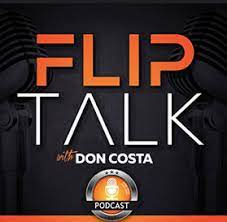What’s trending in the mortgage space that investors should be watching now?
The US mortgage market continues to evolve in many ways. Whether you are investing directly in real estate, simply own a home, are invested in real estate funds, or are buying mortgage notes, it pays to watch these changes and the potential impact they can have.
Digital Mortgages
While few lenders and conduits really do digital mortgages well yet, JD Power data shows borrowers are increasingly applying for loans online. That number hit 43% in 2017, and will likely rise in 2018. While it often seems prospective borrowers are just shopping for the lowest promised rate and price, Housing Wire reports that finding a lender they can trust is just as important. That makes one of the big challenges for lenders turn into how to simultaneously blend the efficiency of digital, with trusted personal service and relationship building.
It is also wise to keep an eye on how digitization of the mortgage origination process affects loan and borrower types. It may work well for some borrowers, but accidentally make it too challenging for some of the best borrowers, while opening up new avenues for fraud and mistakes.
Relaxation of Loan Underwriting
A new senate banking bill aims to break down many of the barriers the mortgage industry has recently been limited by. It would allow smaller lenders and credit unions to make more lenient loans, while still benefiting from the protections big banks get. Some fear it will loosen up underwriting too much. Others fear it won’t do enough. Some believe it could be vital for continuing to fuel the housing market and growth in the years ahead.
Whether the proposed bill becomes law or not though is still up in the air though, and it may be awhile before we find out. If it were to pass, smaller institutions with less than $10B in assets could potentially become some of the best sources of mortgage loan investments.
Non-Bank Lending on the Rise
Due to the many restrictions and concerns of liability for big banks, many commercial banks have simply been funneling their capital through non-bank lenders in the form of credit lines. This has helped the non-bank lending sector to bounce back in a big way, and in many different forms than seen a decade or two ago.
This has been an absolutely crucial form of funding for the US property market as a whole. It has provided essential liquidity. This dynamic though is also likely to keep changing in the near future.
Seller Financed Mortgages
Unless the mortgage market really does open up in a big way soon, seller financed mortgages will increasingly become a more essential part of the market to keep things moving. Intelligently allocated in your portfolio, these mortgage notes can be very valuable. However, it is also wise to watch out how this trend shows up. Are the borrowers selling properties with owner financing, wrap around mortgages, or lease options? These may present complications if you need to foreclose.
Read additional articles from Mr. Bilal by joining our VIP network, it’s complimentary and connects you to the power players of real estate investing.





















